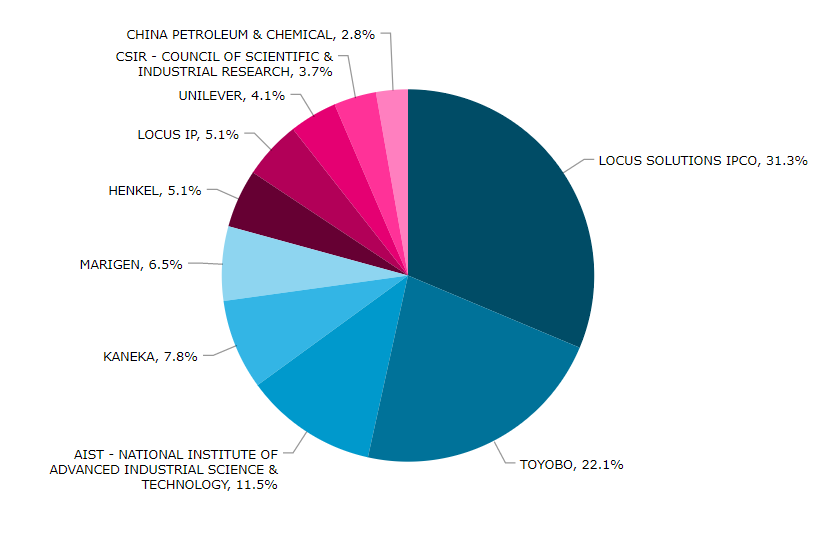Introduction
Surfactants are chemical compounds that have both hydrophilic and hydrophobic regions, allowing them to reduce surface tension at the interface between two immiscible phases, such as oil and water. Synthetic surfactants have environmental and health concerns, such as toxicity and biodegradability issues.
Bio surfactants, on the other hand, are considered environmental friendly because they are biodegradable and non-toxic. Biosurfactants are a type of natural surfactant produced by microorganisms such as bacteria and fungi. They are produced from renewable resources such as vegetable oils, animal fats, and waste materials. They are more stable in extreme conditions than like high temperature, and high salinity. They are also easier to produce on a large scale as they are produced using a variety of microorganisms. There are certain challenges with Biosurfactants as well such ashigher production costs and lower yield. Is there an opportunity area here?
What are different types, properties and application areas of Bio surfactants
|
Type of Surfactant |
Biosurfactant |
Property |
Application |
|
Glycolipids |
Rhamnolipids |
antimicrobial property |
Bioremediation, Oil recovery, Food industry |
|
Sophorolipids |
antimicrobial property |
Pharmaceuticals, Cosmetics |
|
|
Trehalolipids |
high surface activity and stability in extreme conditions |
|
|
|
Lipopeptides |
Surfactin |
antimicrobial and antiviral property |
Pharmaceuticals |
|
Iturin |
antifungal property |
Agriculture |
|
|
Fengycin |
antifungal property |
Agriculture |
|
|
Phospholipids |
Phosphatidylethanolamine |
anti-inflammatory and antimicrobial property |
Pharmaceuticals |
|
Phosphatidylglycerol |
antioxidant property |
Food industry |
|
|
Fatty acids |
Oleic acid |
antimicrobial property |
Food industry |
|
Palmitic acid |
emulsifying property |
Cosmetics |
|
|
stearic acid |
emulsifying property |
Cosmetics |
Impact of Bio surfactants
Food Industry
Improving food safety: Bio surfactants with antimicrobial properties can help in controlling the growth of bacteria and fungi in food products, which can reduce food spoilage and waste.
Health benefits: Bio surfactants having antioxidant properties can improve the health benefits of food products as they can serve as natural preservatives.
Product development: Bio surfactants are used as emulsifiers to create stable emulsions and as foaming agents to create stable foams. They can also be used as flavour enhancers and to mask unpleasant flavours.
Cosmetic Industry
Improving safety: Bio surfactants having antimicrobial properties are used as natural preservatives in cosmetic products, thereby improving shelf-life of cosmetics. They also help in mixing immiscible substances to create stable emulsions.
Health benefits: Bio surfactants having moisturizing and antioxidant properties are used to hydrate and soften the skin. They also improve the absorption of other active ingredients like vitamins. Bio surfactants with anti-aging properties improves skin elasticity and firmness, thereby reducing fine lines and wrinkles.
Product performance: They enhance the texture, spread ability, and moisturizing properties of cosmetic products. They are also gentle on the skin. They are also used to create foams and bubbles in products like shampoos, soaps, and body washes.
Pharmaceutical Industry
Drug Delivery: Bio surfactants enhance solubility, bioavailability, and stability of drugs, which directly has an impact on delivery. It can improve targeting, reduce side effects, and reduce the quantity of drug required.
Versatility: Bio surfactants reduce surface tension and improve the spreading and penetration of drugs. They are used to stabilize emulsions and suspensions of drugs. Animal studies have shown that bio surfactants like sophorolipids reduce inflammation, and rhamnolipids accelerate wound healing.
Agriculture
Pesticide: Bio surfactants enhance the spreading and penetration of pesticides on plants, thereby reducing the amount of pesticide used.
Soil Quality: Bio surfactants increase availability of nutrients in soil. Bio surfactants are also used to remove contaminants from soil in soil remediation process.
Plants and Seeds: Bio surfactants help in plant growth by increasing nutrient uptake. They also improve seed germination rate by increasing water uptake and nutrient absorption.
Environmental Remediation
Oil Spill and Recovery: Bio surfactants emulsify the oil, making it easier to biodegrade or extract. They are employed to break down and disperse oil spills in water. In underground oil reserves, they can help in extraction.
Soil Contamination: Bio surfactants make hydrophobic contaminants easily accessible to biodegrading microorganisms.
Wastewater Treatment: Bio surfactants combine with heavy metals, and organic pollutants by forming complexes, making their removal easy. They also help in reducing foaming.
Leading Companies in Bio surfactants domain

Conclusion
Bio surfactants have very high potential as they have applications in various fields. However, large scale production of bio surfactants is not yet commercialized. It is highly likely that production might increase in coming years as more companies will recognize the benefits of bio surfactants. A lot of research is being done on improving yield of bio surfactants’ production
How MCRPL can help?
MCRPL is 20-year-old company that undertakes all kind of searches involving all patent, scientific, and technical information that exists about any particular domain. Our team is a collaboration of experts holding Masters and PhD degrees in various fields. We deploy search experts, who have expertise and knowledge in various domain to work on such challenging, and complex searches.
To ensure quality is immaculate, we use the Human-Plus-Machine approach (MCRANK), well-maintained SOPs, and internal manuals for working on typical searches. Our team has has multiple patent agents, patent attorneys, IP experts that give us an edge in performing complex searches.
We have in-depth knowledge about different types of bio surfactants and can expertly identify individual bio surfactant compound with respect to any specific application. Our expertise also include conducting product searches to identify all the available products and companies manufacturing them.






